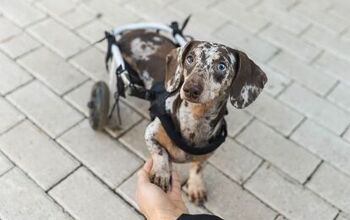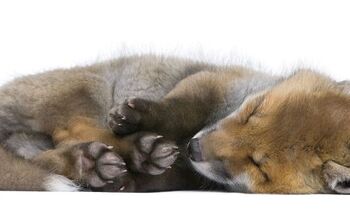How To Start Running With Your Dog

Running is an excellent way to improve your own fitness and it can be a great form of exercise for your dog as well. You shouldn’t immediately start off by taking your dog for a two-mile run, however. In the same way that you would build up your own endurance, you also need to build your dog’s endurance for running. It can be a bit daunting to get started, so let’s talk about the basics about how to start running with your dog.
When to Start Running
The first thing you need to know about running with your dog is that you need to wait until he is at least one year old. In order for a dog to be able to run safely for any great length, he needs to achieve skeletal maturity first – that is, his bones need to be fully developed. If you try to start running with your dog too early, it could cause some serious problems for your pup. When a puppy’s muscles tire, they will not be able to support his skeletal system and, as a result, bone will grind against bone and this could cause permanent damage. According to veterinarian Tim Hackett of Colorado State University’s Veterinary Teaching Hospital, seven months is the absolute earliest age at which to start a dog with running, but one year is recommended. Keep in mind that the larger the breed of dog, the longer it will take to reach skeletal maturity. Some giant breeds, for example, may not be fully grown until 18 to 20 months of age.
Related: Get Moving And Get Muttivated!
Before You Start Running
Once your dog reaches skeletal maturity, it is recommended that you take him to the vet for a check-up to make sure he is healthy enough for running. If your vet is able to confirm that your dog is ready for running, then you can begin with an endurance-building program. Start off by only running with your dog for a total of one mile per week and take the time to observe and assess his recovery after each run. Check to see how long it takes for your dog’s breathing to return to normal and how well the pads of his feet are holding up. One of the most common injuries seen in dogs that run on a regular basis is pad wear, so do not neglect your dog’s feet.
Tips for Building Endurance
To build up your dog’s endurance you should start with three easy jogs per week, each one lasting only about 15 or 20 minutes. Each week, add another five minutes to your jog as long as your dog is able to handle it. Just as you would warm up your own body before a long run, make sure to warm up your dog as well and keep a close eye on him to monitor for signs of fatigue. Your dog is at your mercy for taking breaks during the run – he will run for as long as you do, so don’t forget to give him a rest of he needs it and bring some water along as well. As you build up your dog’s endurance it is important that you give him a day or two to rest in between runs. Every dog is different, so pay attention to your dog’s recovery after each run – if he seems to be particularly lethargic or tired after a long run, give him an extra day to recover.
Related: Nama-stay! Doga Gives Yoga A Furry Makeover
Running with your dog is not only a great form of exercise, but it can also be a bonding experience as well. Taking your dog for a run also gives you an opportunity to strengthen your dog’s obedience skills and to give him some extra socialization as you go for runs in new and different areas. The key to ensuring that your dog stays safe and healthy is to start off slow and to monitor his progress – don’t try to push your dog too far and make sure he gets a break when he needs it.

Kate Barrington is the loving owner of two cats (Bagel and Munchkin) and a noisy herd of guinea pigs. Having grown up with golden retrievers, Kate has a great deal of experience with dogs but labels herself a lover of all pets. Having received a Bachelor's degree in English, Kate has combined her love for pets and her passion for writing to create her own freelance writing business, specializing in the pet niche.
More by Kate Barrington























